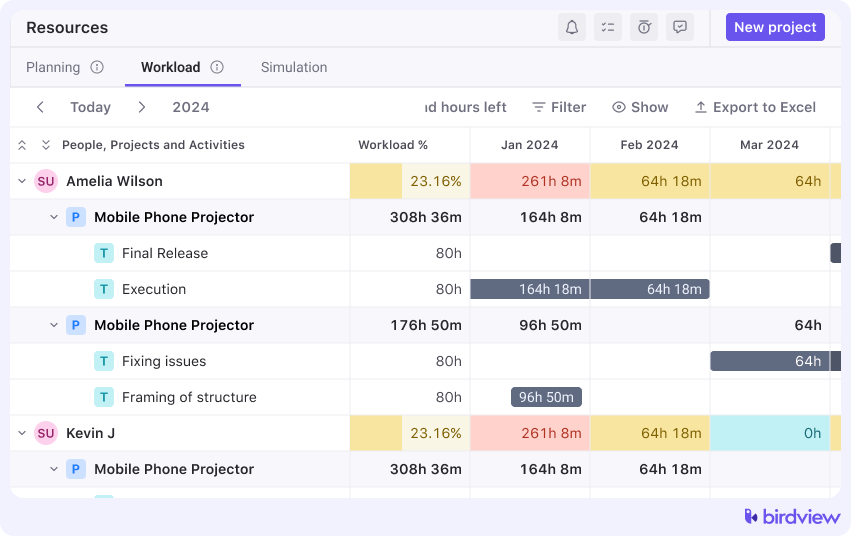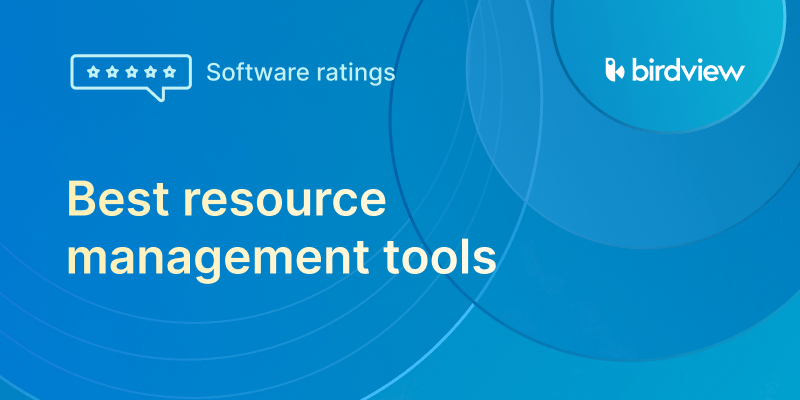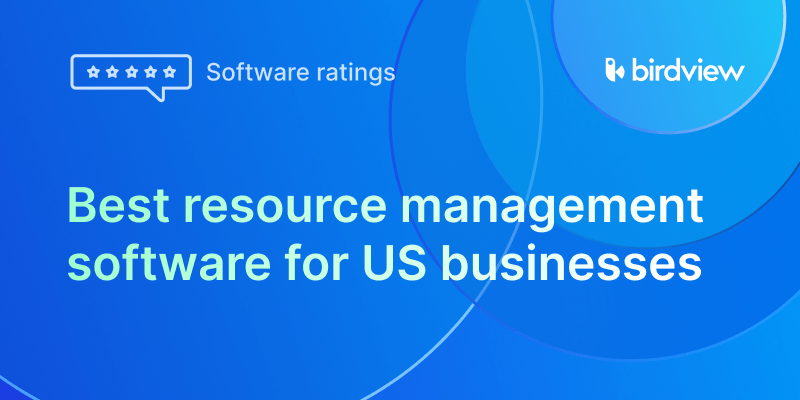For many organizations, the Project Management Office (PMO) is evolving beyond tactical project support. Today’s PMO is a strategic partner, tasked with ensuring that project execution aligns with overarching business goals, delivering value, and maximizing the return on investment in projects and resources. A critical piece of this strategic evolution is mastering resource capacity planning.
You know what‘s at stake. Strategic goals–whether it‘s launching new services, entering new markets, or driving internal initiatives–can only move forward when the right people are available at the right time. Without a clear capacity strategy, the PMO is stuck reacting: putting out resource fires, missing key opportunities, working with poor forecasts, and failing to show leadership how ready the organization really is.
“The presence of a Project Management Office (PMO) contributes significantly to the alignment of projects with strategic organizational goals by facilitating project governance, strategic decision-making, and knowledge transfer.”
– Sandhu, Ahmad et al., “The Role of PMO in Strategic Plan Implementation,
When planning lives in spreadsheets, and staffing decisions are made at the last minute, resource management turns into guesswork. To work effectively, the PMO needs a single, connected system–one that shows real-time demand, maps it to available supply, and keeps people focused on what matters most.
That‘s where Professional Services Automation (PSA) software steps in–not just as a support tool, but as a key enabler of strategy. It gives PMOs the visibility, control, and intelligence they need to shift resource planning from a back-office task into a central pillar of business execution.
Discover how modern PMOs use strategic resource capacity planning to align projects with business goals. Learn how Birdview PSA empowers your team with visibility, forecasting, and control.
In this article
Beyond the project: why strategic resource capacity planning is a PMO mandate
In a project-based organization, the PMO is uniquely positioned to oversee the intersection of project demand and resource supply across the entire portfolio. Unlike individual project managers (focused on their single project) or functional managers (focused on their team’s day-to-day work), the PMO holds the key to a holistic view. Strategic resource capacity planning becomes a PMO mandate because it directly impacts the firm’s ability to execute its strategy:
- Portfolio Success: Strategic capacity planning ensures that high-priority projects aligned with business goals are adequately staffed, increasing their likelihood of success. Without this, critical initiatives might fail due to lack of resources.
- Maximizing Resource ROI: The PMO can ensure that the firm’s most valuable resources (people with specialized skills) are allocated strategically to projects that maximize their contribution and profitability.
- Accurate Strategic Forecasting: Provides leadership with reliable forecasts of the firm’s capacity to deliver on future strategic initiatives based on the available resource pool.
- Balancing Demand & Supply: Enables the PMO to manage overall project demand against the available resource supply, informing decisions about which projects to greenlight, when to start them, and where potential bottlenecks exist across the portfolio.
- Informing Strategic Investments: Data from capacity planning helps justify investments in hiring new resources, training existing staff (to build capacity in needed skill areas), or investing in technology.
- Reducing Risk: Proactively identifies potential resource constraints or overloads across the portfolio before they become critical risks that derail strategic projects.
- Driving Predictability: Brings a level of predictability to resource availability and project staffing, enabling smoother execution of the strategic roadmap.
The PMO’s role shifts from merely tracking resources within projects to strategically managing the firm’s overall resource capacity to meet future demands aligned with business objectives.
Read more:
Capacity Requirement Planning (CRP): Process & Tools
Capacity Planning and Resource Planning: What is Difference?
Top challenges PMOs face in strategic resource capacity planning
Elevating resource capacity planning to a strategic level isn’t without its challenges for the PMO:
Siloed Resource Data: Resource availability, skills, and assignments are often tracked independently by different teams or in disconnected spreadsheets, preventing a consolidated view.
Difficulty Consolidating Project Demand: Aggregating resource needs from potential sales opportunities (pipeline) and confirmed projects across the entire portfolio is a complex manual task.
Lack of Real-Time Visibility: Static reports based on outdated data fail to provide an accurate, real-time picture of current resource workloads and availability.
Resistance to Standardized Processes: Getting different departments and project managers to adopt consistent methods for estimating effort, tracking time, and requesting resources can be challenging.
Inability to Perform Scenario Planning: Without integrated data and modeling tools, the PMO struggles to quickly assess the impact of strategic “what-if” scenarios (e.g., “What if we land this major client?”, “What if a key resource leaves?”) on overall capacity.
Difficulty Communicating Insights to Leadership: Presenting clear, data-driven insights on resource capacity, risks, and strategic alignment to executive leadership is difficult with fragmented data.
Focus on Tactical Issues: The PMO might be bogged down in day-to-day resource firefighting (e.g., resolving immediate conflicts), leaving little time for strategic planning.
Overcoming these challenges requires a comprehensive approach and the right technology platform.
Read more:
The Expert’s Guide to Resource Planning in 2025
What is a Resource Allocator? Key Role & Responsibilities
7 key building blocks of strategic resource capacity planning
A strategic approach to resource capacity planning involves managing several integrated components, overseen by the PMO:
- Demand Management (Portfolio & Pipeline):Identifying, capturing, and forecasting resource needs from the entire project portfolio, including confirmed projects and potential opportunities in the sales pipeline.
- Supply Management (Resource Pool & Skills Inventory): Maintaining a clear, centralized inventory of all available resources, their Job Roles, Skills, cost rates, standard capacity, and planned availability (time off).
- Workload Assessment & Balancing: Monitoring current and future workload assignments against available capacity to identify potential over- or under-utilization for individuals, teams, or roles across the portfolio.
- Strategic Resource Forecasting: Predicting long-term resource needs based on aggregated demand and supply data, identifying future capacity gaps or surpluses by skill and role.
- Scenario Planning & What-If Analysis: Modeling the impact of changes (new projects, resource changes, timeline shifts) on overall resource capacity before making commitments.
- Performance Measurement & Reporting: Tracking key metrics (e.g., resource utilization, forecast accuracy, budget adherence related to labor costs) and providing consolidated reports and dashboards to executive leadership on resource capacity and portfolio execution capability.
- Standard Process Implementation: Establishing and enforcing standardized processes for project intake, resource requests, time tracking, and project progress updates across the organization.
The PMO acts as the central hub, coordinating data and insights across these components to inform strategic decisions.
How Birdview PSA empowers the PMO for strategic capacity planning
Birdview PSA is a comprehensive PSA software designed specifically to provide the PMO with the integrated platform needed for strategic resource capacity planning. It consolidates data, automates calculations, and delivers the visibility and tools to manage resources effectively across the entire project portfolio.
Here‘s how Birdview PSA empowers the PMO for strategic capacity planning:
Centralized, Unified Data Platform:
How Birdview PSA helps: Consolidates all project data, resource profiles, time tracking, expenses, and sales pipeline information into a single source of truth.
💡Advantage for the PMO: Eliminates data silos and the need for manual data aggregation across disparate systems, providing the PMO with a real-time, holistic view essential for strategic planning.
Integrated Demand & Sales Pipeline Management:
How Birdview PSA helps: Allows the PMO to see and manage demand from confirmed projects and potential opportunities in the sales pipeline (via CRM integration). Assign estimated resources to pipeline deals.
💡 Advantage for the PMO: Provides visibility into future demand, enabling the PMO to forecast potential resource needs based on weighted pipeline opportunities and plan capacity proactively. Facilitates seamless handoff from sales to delivery.
Comprehensive Supply Management & Skills Inventory:
How Birdview PSA helps: Manage detailed resource profiles, including Job Roles, Skills with proficiency levels, standard capacity, and planned time off.
💡 Advantage for the PMO: Creates a centralized, searchable resource inventory, making it easy for the PMO to understand the available skills pool and identify resources with the necessary expertise for strategic initiatives. Supports skill gap analysis.
Visual Workload Assessment & Balancing:
How Birdview PSA helps: Provides visual tools like Resource Loading Reports and workload heatmaps that display assigned work vs. available capacity across individuals, teams, or roles for current and future periods.
💡 Advantage for the PMO: Enables the PMO to quickly identify potential over- or under-utilization and bottlenecks across the entire portfolio, allowing for proactive workload balancing and resource allocation adjustments.

Strategic Resource Forecasting & Scenario Planning:
How Birdview PSA helps: Leverages consolidated project and pipeline data to provide long-term resource forecasts by role and skill. Includes a scenario planning tool to model impacts.
💡 Advantage for the PMO: Empowers the PMO to predict future capacity needs months or years in advance. They can model strategic scenarios (e.g., “What if we delay Project X?”, “What if we hire 3 new engineers?”) to understand their impact on resource capacity and inform strategic decisions.
Portfolio-Level Performance Measurement & Reporting:
How Birdview PSA helps: Aggregates key metrics, including resource utilization, project progress, budget adherence (especially labor costs), and profitability, across the entire project portfolio. Provides customizable dashboards and reports.
💡 Advantage for the PMO: Provides the PMO with the data and tools to report clearly and objectively to executive leadership on the firm’s ability to execute its strategy from a resource and project performance perspective. Justifies resource investments.

Standardized Process Implementation:
How Birdview PSA helps: Provides configurable workflows for project intake, resource requests, time tracking, expense submission, and approvals, enforcing consistent processes.
💡 Advantage for the PMO: Enables the PMO to standardize operational processes across departments, ensuring consistent data quality and streamlined workflows, which are foundational for effective strategic planning.
Birdview PSA playbook: how to implement strategic capacity planning across the PMO
Elevating resource capacity planning to a strategic function requires a structured approach, with Birdview PSA as the enabling technology:
- Centralize Resource Data: Migrate all resource profiles, skills, job roles, standard capacity, and time off information into Birdview PSA. Ensure this data is accurate and regularly updated.
- Integrate Sales Pipeline: Connect your CRM to Birdview PSA to gain visibility into the sales pipeline. Work with sales to ensure estimated resource needs are captured for opportunities in Birdview PSA.
- Consolidate All Project Data: Ensure all confirmed and in-progress projects are fully planned and tracked within Birdview PSA, including tasks, dependencies, budgets, and assigned resources.
- Define and Standardize Processes: Establish clear, consistent processes for project intake, resource requests, and time tracking, using Birdview PSA’s workflows to enforce standards across the firm.
- Establish a Regular Capacity Review Cadence: Schedule recurring meetings (e.g., monthly or quarterly) with key stakeholders (portfolio managers, resource managers, business unit heads) to review Birdview PSA’s capacity forecasts, workload reports, and pipeline impact.
- Utilize Scenario Planning for Strategic Decisions: Before approving major new initiatives or making significant resource investments, use Birdview PSA’s scenario planner to model the impact on overall capacity. Present these insights to leadership.
- Build Portfolio-Level Reports for Leadership: Create customized dashboards and reports in Birdview PSA specifically for executive leadership, focusing on key metrics like overall resource utilization, capacity vs. demand by role/skill, and the feasibility of the strategic roadmap from a resource perspective.
- Continuously Refine Data and Processes: Treat resource capacity planning as an ongoing process. Regularly review the accuracy of forecasts, refine estimating practices, and ensure data in Birdview PSA remains current.
The PMO plays a crucial, strategic role in resource capacity planning, bridging the gap between strategic objectives and the firm’s ability to execute. However, managing capacity effectively across an entire project portfolio is challenging with manual or disconnected tools.
Professional Services Automation (PSA) software, like Birdview PSA, is the essential platform that empowers the PMO to elevate this function. By providing a centralized data platform, integrating demand and supply, enabling forecasting and scenario planning, and delivering powerful portfolio analytics, Birdview PSA transforms the PMO into a true strategic partner in aligning resources with business goals, ensuring portfolio success, and driving predictable growth.
Equip your PMO with the tools needed to gain control over your firm’s most valuable asset – its people – and confidently execute your strategic vision.
Discover how Birdview PSA can transform your resource management
and portfolio oversight.
or
Read more:
Frequently Asked Questions
What is the strategic role of the PMO?
The strategic role of the PMO involves aligning project execution with overarching business goals, ensuring projects deliver value, maximizing ROI, and providing leadership with a clear picture of the firm’s ability to execute its strategy. Strategic resource capacity planning is a core part of this role.
Why is resource capacity planning important for the PMO?
Resource capacity planning is vital for the PMO as it ensures the firm has the necessary resources (people, skills) to deliver on its strategic initiatives, maximizes the return on resource investments, enables accurate strategic forecasting, helps balance demand and supply, and reduces the risk of critical projects failing due to resource constraints.
What are the main challenges a PMO faces in strategic capacity planning?
Main challenges include siloed resource data, difficulty consolidating project demand (including pipeline), lack of real-time visibility, resistance to standardized processes, inability to perform scenario planning, and difficulty communicating insights effectively to leadership.
How does PSA software help the PMO with strategic capacity planning?
PSA software helps the PMO by providing a centralized data platform, integrating demand from projects and pipeline, enabling comprehensive resource inventory management, offering visual workload assessment, supporting strategic forecasting and scenario planning, and delivering robust portfolio-level reporting.
What is demand management in strategic capacity planning?
Demand management is the process of identifying, capturing, and forecasting resource needs from all potential sources of work across the entire portfolio, including confirmed projects and opportunities in the sales pipeline.
How does Birdview PSA help the PMO visualize team workload?
Birdview PSA helps the PMO visualize team workload by providing visual tools like Resource Loading Reports and workload heatmaps that display assigned work versus available capacity for individuals, teams, or roles across the entire portfolio for current and future periods.
Can PSA software help the PMO justify hiring new resources?
Yes, PSA software helps the PMO justify hiring requests by providing data-driven insights from resource forecasts, workload reports, and skill gap analyses. These reports demonstrate where demand consistently exceeds available capacity or required skills are lacking.
What are the key components of PMO-led strategic capacity planning?
Key components include Demand Management (portfolio & pipeline), Supply Management (resource pool & skills), Workload Assessment, Strategic Resource Forecasting, Scenario Planning, Performance Measurement & Reporting, and Standard Process Implementation.
How can the PMO use Birdview PSA for scenario planning?
The PMO can use Birdview PSA’s scenario planning tool to model hypothetical situations (e.g., adding a new project, a key resource leaving) and see the potential impact on the firm’s overall resource capacity, helping inform strategic decisions.
Does Birdview PSA integrate with sales pipeline data for PMO planning?
Yes, Birdview PSA can integrate with CRM systems to pull in sales pipeline data, allowing the PMO to see potential future projects and assign estimated resources to opportunities, which feeds into strategic resource forecasting.



